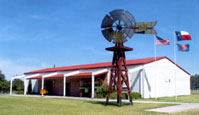|
June 19, 2011
WOLF CREEK HERITAGE MUSEUM NOTES by Virginia Scott MUSEUM HAPPENINGS Summer is always fun for the museum because we have visitors from all over the world and visitors who are ole friends of the museum. Both have happened , visitors from Germany and ole friends , Ed and Jan Wiley came by to see how we were doing. The Wileys have been supporters of the museum since Mildred first envisioned the project so it is always good to see them and hear about their adventures. It is also the time of the year , that there are family reunions. We have had visits from the members of the Babitzke family and the Fiel family visited us on Saturday. Thanks, Lovella, for opening the museum and hosting their visit. A reminder that the museum is available for events on Saturday, Sunday , or after hours. Just call us and book it. We love to host family gatherings. We haven't had any one claim the pretty key chain, if no one calls or claims it by next Wednesday, it will be given to the person who found it on our parking lot. Again, it is a pretty animal. REMINDER: SUNDAY, JUNE 26, 2PM TO 4PM THE AKERS FAMILY WILL BE PRESENT FOR A BOOK SIGNING AND RECEPTION. Come and visit with Pam, Sharon, Melissa, Monte about their quilts, paintings, books, and their mothers art. Monte will be present to sign his new book and his previous books. The museum is nice and cool so come on by and enjoy the air conditioning and the cookies and punch. Most of all enjoy the fellowship and talents of this family. HISTORICAL MUSINGS In remembering our history , we often think only of people and places. We forget that animals were responsible for a lot of our history. One such animal was the Longhorn cattle. In an article by J.L. Beardsley entitled "Horns, Herds, and History" , Mr. Beardsley traces the history of the Longhorn into Texas and the surrounding area. He quotes the Spanish Archives at Madrid that records that Gregorio Villalobos brought the first cattle to North American when he was sent to New Spain from Santo Domingo , where Spain was following up Columbus' discoveries with colonizing efforts. He also quotes sources that Coronado's expedition and Juan de Onate's expedition in 1595 brought big and little cattle . It is believed that "Coronado, Frey Marcos de Niza, Onate and several other conquistadores who explored the south western regions, undoubtedly took with them numbers of cattle and other domestic animals. These were the foundation stock of the cattle of the great southwest, including Old Mexico, Arizona, New Mexico and Texas, from which came the Longhorns of Texas, and ultimately the whole cattle industry of the west." The Longhorn was not an ideal beef animal, but his ability to adapt himself in primitive conditions made him suited for the western ranges as the native buffalos, and his instinct of self-preservation and "cow sense" were two of his redeeming traits. These original Spanish types were lanky and "leggy as an elk" with an irritable and vicious temperament. Some of the early ranchers who bred Longhorns with Herefords were Will C. Barnes, Arizona pioneer cattleman , John Rush, Oklahoma, and L.A. Schriner, Kerrville, TX. Schriner bought a bull and some cows in the late 1920's in an effort to raise some calves that would show a high percentage of Longhorn blood and characteristics. It was his hope to preserve the fast vanishing breed. His rarest specimen and his star was "Old Blue" which he considered one of the last of the clean strain Longhorns. His horn spread was 89 inches with dark markings of a dirty dun color, with sides of "pied blue." His project failed but he did bring attention to the Longhorn plight. It is Will C. Barnes,however, that gets the true credit for preserving the Longhorn. Active in conservation policies under President Theodore Roosevelt, Barnes commented in his article "On the Trail of the Vanishing Longhorn", Saturday Evening Post, (Oct. 15, 1927), ...it was always my idea to gather a Longhorn herd which I began working on soon after we had the buffalo safely located in the Wichita forest. We had the Indians there, too, and I felt that the Longhorn was the third of a historic trio that rightfully belonged there. ... It took him years to convince Congress to preserve the Longhorn and they found it difficult to find a herd ; finding only 10 cows and one old bull meeting their standards in the southern extremities of Texas , along the Rio Grande between San Antonio and Brownsville. After searching other regions , they ended with a herd of 23 head after traveling almost 5,000 miles. The herd was placed in the Wichita National Park . He had realize his dream. The U.S. Fish & Wildlife Service nurtured the herd with tremendous success. In 1964, The Texas Longhorn Breeders Association was formed by Texas ranchers including J. Frank Dobie who were breeding and raising Longhorns as a hobby. The association mission was to promote interest in the Longhorn as an important segment of our pioneer past and a distinct American breed. Today, the legendary Longhorn has struggled back from near extinction and can be found roaming over the ranges of the Southwest in public and private herds to be enjoyed by us all. |
 |
© 2006 - 2025 Wolf Creek Heritage Museum
All Rights Reserved |


